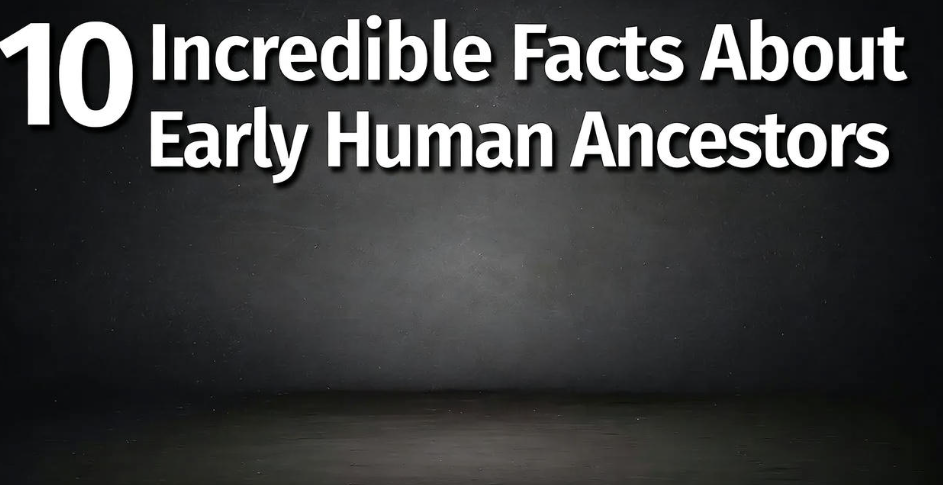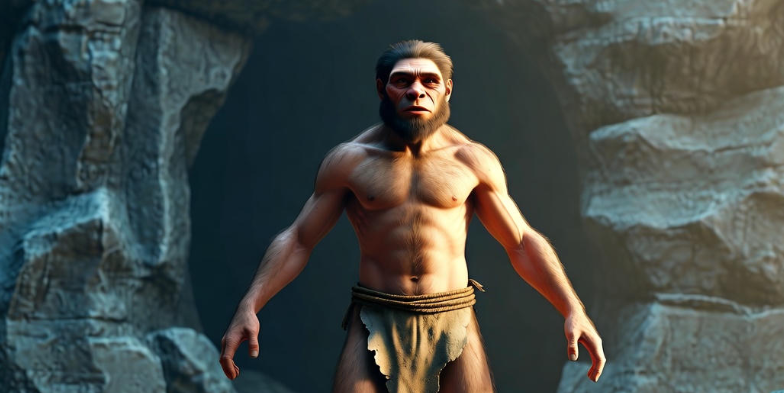It’s strange when you think about it. There were once many human-like species walking this Earth — Neanderthals, Denisovans, Homo floresiensis, and others. Yet, here we are — the only ones left. How did Homo sapiens, our own species, make it through when the rest faded into history? What gave us the edge? Let’s dive into this fascinating survival story — told simply, clearly, and in a way that really makes sense.
The World Before Us
Around 200,000 years ago, Earth wasn’t just home to us. In fact, we were the new kids on the block. The world was crowded with different types of humans living across Africa, Europe, and Asia. There were the Neanderthals in Europe, strong and intelligent; the Denisovans in Asia; and even tiny humans called Homo floresiensis (the “Hobbits”) living in Indonesia.
Each of them had their own way of surviving — making tools, hunting animals, and forming small communities. But somehow, over time, one by one, they disappeared. Only we, Homo sapiens, remained.
The Power of Adaptability 🧠
If we had to pick one word to explain why we survived, it would be adaptability.
While other human species were great at living in certain environments, we were great at adjusting. Whether it was a freezing ice age or a burning savannah, Homo sapiens learned to adapt fast.
We didn’t just rely on one type of food or one kind of shelter. We hunted, gathered, fished, and even stored food. We learned to make clothing from animal skins when the weather changed. Other humans might have been trapped by their surroundings, but we were always finding new ways to live.
| Species | Main Region | Adaptability Level | Main Limitation |
|---|---|---|---|
| Neanderthals | Europe | Medium | Cold climate dependence |
| Denisovans | Asia | Low | Small population |
| Homo sapiens | Global | Very High | None (flexible diet, wide migration) |
The Gift of Language and Communication 🗣️
Imagine living in a small group where you can’t properly share ideas. You’d be stuck doing the same things over and over again. That’s what gave us a major advantage — language.
Homo sapiens could communicate complex thoughts, warn others about danger, plan hunts, and even tell stories. This helped build stronger communities and pass on knowledge. A single word or gesture could save a life or lead to a discovery.
It wasn’t just about survival — it was about connection. Language made teamwork possible, and teamwork made survival easier.
The Creative Mind and Innovation 🔥
Let’s not forget our love for creativity. We didn’t just make tools; we improved them. We made art, carved symbols, painted cave walls, and designed new weapons.
Where Neanderthals might have used one type of stone tool for centuries, Homo sapiens kept experimenting. That curiosity helped us create sharper tools, better shelters, and even new ways of cooking food.
We were not only survivors — we were thinkers, dreamers, and inventors.
| Innovation | Impact |
|---|---|
| Fire mastery | Warmth, cooking, protection |
| Clothing | Survival in cold regions |
| Stone blades | Better hunting efficiency |
| Cave art | Early form of expression and learning |
Social Bonds and Cooperation 🤝
Another secret weapon of Homo sapiens was social connection. We didn’t just think about ourselves. We cared for the sick, shared food, and protected our young together.
These emotional bonds built strong tribes where everyone had a role. Hunters, gatherers, toolmakers — all working for a shared goal. When one person fell ill, others helped. This sense of community strengthened our survival chances.
Neanderthals, in contrast, were more isolated in smaller groups. That made them vulnerable. When disease, climate change, or hunger hit, they had fewer people to depend on.
Migration and Exploration 🌍
We didn’t stay still. While other human species stayed in one region, we moved — and kept moving. From Africa to Asia, to Europe, to Australia, and even across icy lands to the Americas.
This constant migration meant we learned from every new environment. We discovered new food sources, learned to use new tools, and adapted to all kinds of climates.
Some scientists even believe that this curiosity — the urge to explore — was deeply built into our DNA.
Climate Challenges and Survival Instincts ❄️🔥
Earth’s climate has always been unpredictable. Ice ages came and went, and many species couldn’t handle the change. But Homo sapiens had a special skill — we learned to prepare.
We could move before the danger came. We built shelters, stored food, and worked together. When the ice grew, we followed animals south; when the land dried up, we found rivers.
Other human species, less mobile or less prepared, simply couldn’t keep up with nature’s fast changes.
The Role of Imagination 💭
It might sound poetic, but imagination saved us. We could imagine a future danger before it happened, and act on it. We could plan hunts, imagine tools before making them, and even believe in invisible things like spirits, gods, or destiny.
This imagination made us powerful. It allowed for cooperation beyond small families — entire tribes and cultures could unite under shared stories and beliefs.
Interbreeding and Genetic Mixing 🧬
Interestingly, we didn’t completely replace other humans — we mixed with them. Modern DNA studies show that many people today still carry a small percentage of Neanderthal or Denisovan DNA.
This genetic exchange might have helped us gain some useful traits, like better immunity or tolerance to cold. In a way, we carry a piece of them within us.
| Ancient DNA | Modern Influence |
|---|---|
| Neanderthal | Stronger immune system |
| Denisovan | Better adaptation to high altitudes |
| Homo sapiens | Broader gene diversity |
Survival Through Culture and Learning 📜
Our ability to learn and teach quickly gave us an unmatched edge. Knowledge wasn’t lost when someone died; it was passed down.
We taught children how to hunt, cook, craft, and tell stories. Every generation started a little smarter than the last. That built a strong chain of progress — something no other species had done so effectively.
Culture became our armor. It helped us remember what to do when times got tough.
The Fall of the Others 🏔️
So why did the others vanish? There isn’t just one reason — it was a mix of many things.
-
Climate change hit their regions hard.
-
Limited diet and small groups made them vulnerable.
-
Diseases might have spread faster among them.
-
Competition with Homo sapiens grew intense.
When we arrived in their territories, we probably competed for food and space. Some interbred with us, but many simply couldn’t survive the change.
In time, they disappeared — leaving only fossils, DNA traces, and the lessons of evolution behind.

The Secret Within Our Brain 🧠✨
Our brain structure played a massive role too. Even though Neanderthals had slightly bigger brains, ours worked differently. The frontal lobe — the area responsible for decision-making, planning, and creativity — was more advanced.
That meant we could think abstractly, predict outcomes, and communicate effectively. This mental flexibility gave us an unmatched advantage.
FAQs (Frequently Asked Questions)
Q1: Were Homo sapiens physically stronger than other human species?
Not really. Neanderthals were stronger and tougher. What set us apart was our brain, creativity, and ability to cooperate.
Q2: Did Homo sapiens kill the Neanderthals?
It’s not entirely clear. Some scientists think we competed with them for food and space, while others believe climate and disease played bigger roles.
Q3: Did Homo sapiens and Neanderthals live together?
Yes, in some regions they overlapped for thousands of years. They even interbred, leaving behind traces of Neanderthal DNA in modern humans.
Q4: How long did Neanderthals survive after Homo sapiens appeared?
They survived for tens of thousands of years after us — but eventually vanished around 40,000 years ago.
Q5: What’s the main reason Homo sapiens are still here today?
Adaptability. We could live anywhere, eat anything, and learn fast. We changed when the world changed.
Final Thoughts 🌎
When you look at it closely, our survival wasn’t luck — it was learning, sharing, and adapting. We became storytellers, thinkers, builders, and explorers.
While others stayed the same, we evolved through cooperation and curiosity. Every invention, every story told around a fire, every journey to a new land — all led us here.
We’re the last humans standing not because we were the strongest, but because we were the most connected — to each other, to nature, and to ideas. And maybe that’s the true secret behind why Homo sapiens survived when others didn’t. 💫


